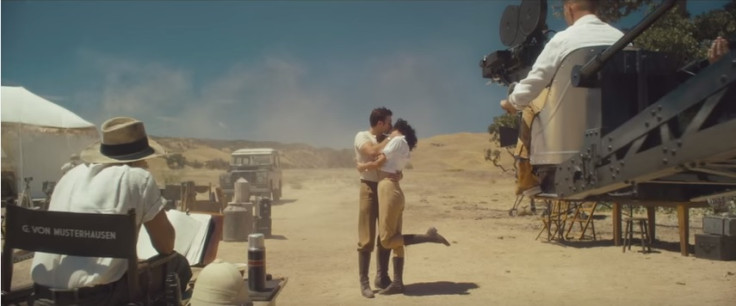Taylor Swift: Wildest Dreams video labelled 'racist' as critics claim it panders to 'rich, white fantasies'

She may have won big at the MTV VMA's last weekend for videos such as Blank Space and Bad Blood, but it doesn't look like Taylor Swift's latest work is impressing quite as much, as many criticise the artistic direction in her most recent track, Wildest Dreams for being "racist" and pandering to the idea of "rich white fantasies".
Set in Africa, the video features a predominantly white cast and centres around two movie stars, played by Swift and Fury actor Scott Eastwood, on a fictional film set in the 1950s. Throughout the clip, there are only two black actors, who can only be glimpsed in the background.
Following the video's debut at the VMA Awards on Sunday (30 August), music fans have taken to Twitter to voice their disapproval. One user wrote: "I question your pleasure principal [sic] if your Wildest Dreams are to fall in love in colonial Africa by erasing black ppl from the continent." Another tweeted: "I didn't like the Wildest Dreams video, really not into rich white fantasies of Africa in the 1950s like... is that romantic?" Whilst another fan simply labelled the video, "colonial garbage".
Critics in the press have also slammed the video. NPR's Viviane Rutabingwa described the video as "problematic", as she explained: "Swift's music is entertaining for many. She should absolutely be able to use any location as a backdrop. But she packages our continent as the backdrop for her romantic songs devoid of any African person or storyline, and she sets the video in a time when the people depicted by Swift and her co-stars killed, dehumanised and traumatised millions of Africans."
Nico Lang, from the Daily Dot said: "Even the most casual observer would have noticed that - for a clip that's set in Africa - it's about as white as a Sunday morning farmer's market. The video wants to have its old-school Hollywood romance but ends up eating some old-school Hollywood racism, too."
Speaking to the Daily Mail, the video's director Joseph Kahn defended the filmmaker's creative choices and argued that the video had "no political agenda". He said their "only goal was to tell a tragic love story in classic Hollywood iconography".
He stated: "Wildest Dreams is a song about a relationship that was doomed, and the music video concept was that they were having a love affair on location away from their normal lives. This is not a video about colonialism but a love story on the set of a period film crew in Africa, 1950.
"There are black Africans in the video in a number of shots, but I rarely cut to crew faces outside of the director as the vast majority of screen-time is Taylor and Scott. The video is based on classic Hollywood romances like Elizabeth Taylor and Richard Burton, as well as classic movies like The African Queen, Out of Africa and The English Patient, to name a few.
"The reality is not only were there people of colour in the video, but the key creatives who worked on this video are people of colour. I am Asian American, the producer Jil Hardin is an African American woman, and the editor Chancler Haynes is an African American man.
"We cast and edited this video. We collectively decided it would have been historically inaccurate to load the crew with more black actors as the video would have been accused of rewriting history. This video is set in the past by a crew set in the present and we are all proud of our work."
He also mentioned Taylor's donation to an African charity: "Taylor has chosen to donate all of her proceeds from [the] video to the African Parks Foundation to preserve the endangered animals of the continent and support the economies of local African people."
© Copyright IBTimes 2024. All rights reserved.






